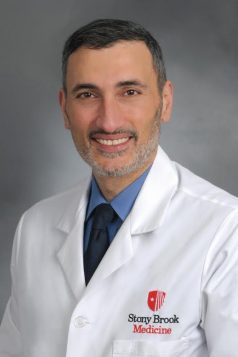Most Americans consume only half the recommended daily fiber.
By David Dunaief, M.D.

Based on an abundance of research, we should all be concerned with getting enough fiber in our diets (1). Most Americans are woefully deficient in fiber, consuming between 10 and 15 grams per day, which is about half of what we should be consuming. Probably not surprising, our consumption of legumes and dark green vegetables is the lowest in comparison to other fiber subgroups (2). This has significant implications for our health.
USDA fiber intake recommendations vary based on gender and age. For adult women, they recommend between 22 and 28 grams per day, and for adult men, the targets are between 28 and 35 grams (2). Some argue that even these recommendations are on the low end of the scale for optimal health.
Though fiber comes in supplement form, most of your daily intake should be from diet. It is actually relatively painless to increase your fiber consumption; you just have to be aware of which foods are fiber-rich.
What difference does fiber type make?
There are a number of different fiber classifications, including soluble, viscous, and fermentable. Within each of the types, there are subtypes. Not all fiber sources are equal.
At a high level, we break dietary fiber into two overarching categories: soluble and insoluble. Soluble fibers slow digestion and nutrient absorption and make us feel fuller for longer. Sources include oats, peas, beans, apples, citrus fruits, flax seed, barley and psyllium.
On the other hand, insoluble fibers accelerate intestinal transit, which promotes digestive health. Sources include wheat bran, nuts, berries, legumes and beans, dark leafy greens, broccoli, cabbage and other vegetables.
Many plant-based foods contain both soluble and insoluble fiber.
How does fiber affect disease progression and longevity?
Fiber has powerful effects on our health. A very large prospective cohort study showed that fiber may increase longevity by decreasing mortality from cardiovascular disease, respiratory diseases and other infectious diseases (3). Over a nine-year period, those who ate the most fiber were 22 percent less likely to die than those consuming the lowest amount.
Patients who consumed the most fiber also saw a significant decrease in mortality from cardiovascular disease, respiratory diseases and infectious diseases. The authors of the study believe that it may be the anti-inflammatory and antioxidant effects of whole grains that are responsible for the positive results.
A study published in 2019 that performed systematic reviews and meta-analyses on data from 185 prospective studies and 58 clinical trials found that higher intakes of dietary fiber and whole grains provided the greatest benefits in protecting participants from cardiovascular diseases, type 2 diabetes, and colorectal and breast cancers, along with a 15-30 percent decrease in all-cause mortality for those with the highest fiber intakes, compared to those with the lowest (4).
We also see a benefit with fiber and prevention of chronic obstructive pulmonary disease (COPD) in a relatively large epidemiologic analysis of the Atherosclerosis Risk in Communities (ARIC) study (5). The specific source of fiber was important. Fruit had the most significant effect on preventing COPD, with a 28 percent reduction in risk. Cereal fiber also had an effect, but it was not as great.
Fiber also has powerful effects on breast cancer treatment. In a study published in the American Journal of Clinical Nutrition, soluble fiber had a significant impact on breast cancer risk reduction in estrogen receptor negative women (6). This is one of the few studies that has illustrated significant results for this population. Most beneficial studies for breast cancer have shown results in estrogen receptor positive women.
The list of chronic diseases and disorders that fiber prevents and/or treats is continually expanding.
How do I increase my fiber intake?
Emphasize plants on your plate. Animal products don’t contain natural fiber. It’s easy to increase your fiber by choosing bean- or lentil-based pastas, which are becoming easier to find in general grocery stores. Sometimes, they are tucked in the gluten-free section, rather than with wheat pastas. Personally, I prefer those based on lentils, but that’s a personal preference. Read the labels, though; you want those that are made from only beans or lentils and not those that include rice.
If you are trying to prevent chronic diseases in general, aim to consume fiber from a wide array of sources. Ensuring you consume substantial amounts of fiber has several health protective advantages: it helps you avoid processed foods, it reduces your risk of chronic disease, and it increases your satiety and energy levels.
References:
(1) Nutrients. 2020 Oct; 12(10): 3209. (2) USDA.gov. (3) Arch Intern Med. 2011;171(12):1061-1068. (4) Lancet. 2019 Feb 2;393(10170):434-445. (5) Amer J Epidemiology 2008;167(5):570-578. (6) Amer J Clinical Nutrition 2009;90(3):664–671.
Dr. David Dunaief is a speaker, author and local lifestyle medicine physician focusing on the integration of medicine, nutrition, fitness and stress management. For further information, visit www.medicalcompassmd.com or consult your personal physician.
















